Nebraska is located in the Midwest region of the United States. It ranks in the top one-third of U.S. states in terms of total area. Here is a look at the size of Nebraska and how it compares with other states, plus a lot more information about the Cornhusker State.
Square Miles and Kilometers
Nebraska’s total area covers 77,348 square miles or 200,330 square kilometers. It is among the driest states in the nation, with only 0.7% of its total area covered by water. Nebraska’s land area spans 76,824 square miles (198,974 square kilometers).
The 524 square miles (1,356 square kilometers) of water in the Cornhusker State is the tenth lowest in the U.S. Only Arizona, Colorado, Iowa, Kansas, New Hampshire, New Mexico, Rhode Island, Vermont, and West Virginia have fewer square miles of water than Nebraska.
Acres
One acre is roughly equivalent to an American football field without the end zones. There are 640 acres in one square mile. Nebraska’s total area covers 49,502,720 acres.
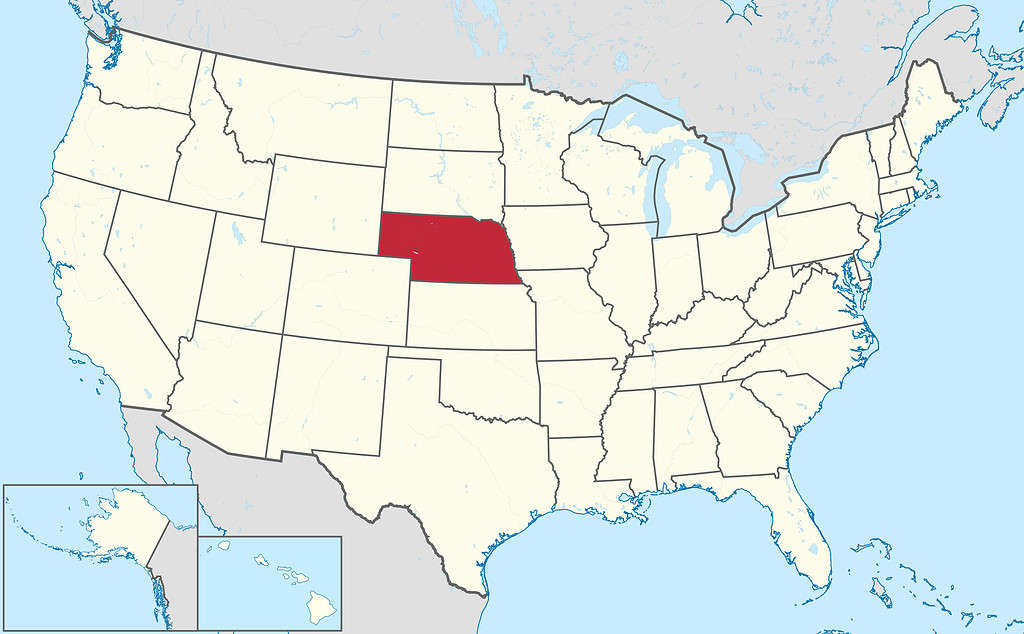
Located in the U.S. Midwest, Nebraska is the nation’s 16th-largest state.
©TUBS / CC BY-SA 3.0 – License
Length and Width of Nebraska
Nebraska spans about 210 miles from north to south. Kansas, Nebraska’s southern neighbor, has a very similar north-to-south measurement of around 200 miles.
Nebraska’s east-to-west distance spans roughly 430 miles. That is slightly wider than Kansas, which measures around 400 miles from east to west.
Nebraska’s width narrows by nearly 100 miles in the southern portion of the state. The width of the state just south of Lincoln is around 322 miles.
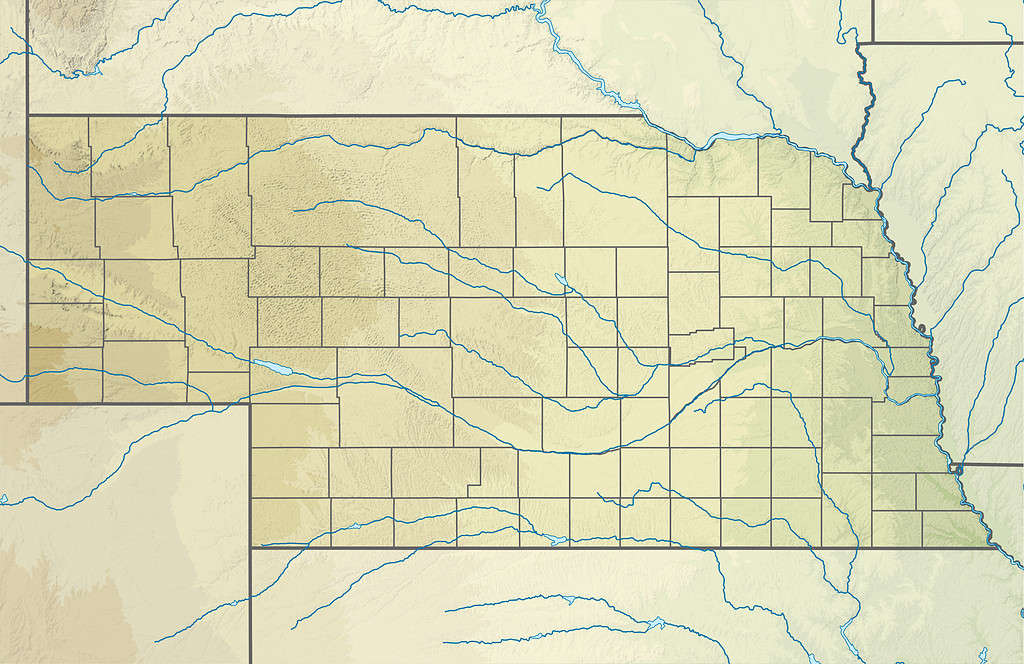
Nebraska’s east-to-west width is more than double its length from north to south.
©SANtosito / CC BY-SA 4.0 – License
Comparisons with Other States
South Dakota is Nebraska’s neighbor to the north. It is also the closest state to Nebraska in terms of total area. Nebraska is only 232 square miles larger than South Dakota.
Nebraska is the 16th largest state in the U.S. in terms of total area. The states that are larger than Nebraska include:
- Alaska
- Texas
- California
- Montana
- New Mexico
- Arizona
- Nevada
- Colorado
- Oregon
- Wyoming
- Michigan
- Minnesota
- Utah
- Idaho
- Kansas
Alaska is the United States’ largest state by an absurd margin. The state spans 665,384 square miles (1,723,337 square kilometers). It is more than 8.5 times larger than Nebraska.
Texas is the biggest state in the conterminous U.S., with a total area of 268,597 square miles (695,663 square kilometers). The Lone Star State is nearly 3.5 times the size of Nebraska. California is over twice as large as the Cornhusker State.
Turning to the other extreme, Rhode Island is easily the smallest state in the U.S. at just 1,214 square miles (3,144 square kilometers).
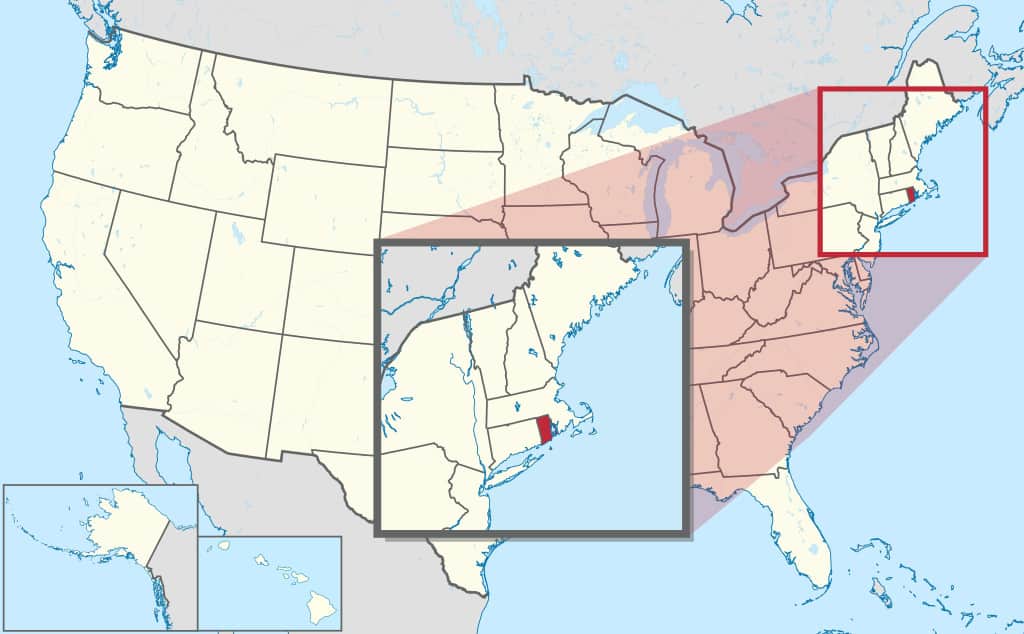
Nearly 64 Rhode Islands could fit inside the borders of Nebraska!
©TUBS / CC BY-SA 3.0 – License
The nine smallest U.S. states combined could fit inside Nebraska. Those states include:
- Maryland
- Hawaii
- Massachusetts
- Vermont
- New Hampshire
- New Jersey
- Connecticut
- Delaware
- Rhode Island
If all of those states were placed inside Nebraska’s borders, there would still be room for two more Delawares and an additional Rhode Island.
Percentage of U.S. Area
Nebraska accounts for 2.04% of the total area of the United States. Again, South Dakota mirrors Nebraska with 2.03% of the U.S. area within its borders.
Rhode Island accounts for a tiny 0.04% of the U.S. Texas, on the other hand, contains 7.07% of the United States. No state comes close to Alaska, though, which accounts for an amazing 17.48% of the total area of the United States.
State Borders
Nebraska borders six states. It is bordered by South Dakota to the north, Iowa and Missouri to the east, Kansas to the south, Colorado to the south and west, and Wyoming to the west.
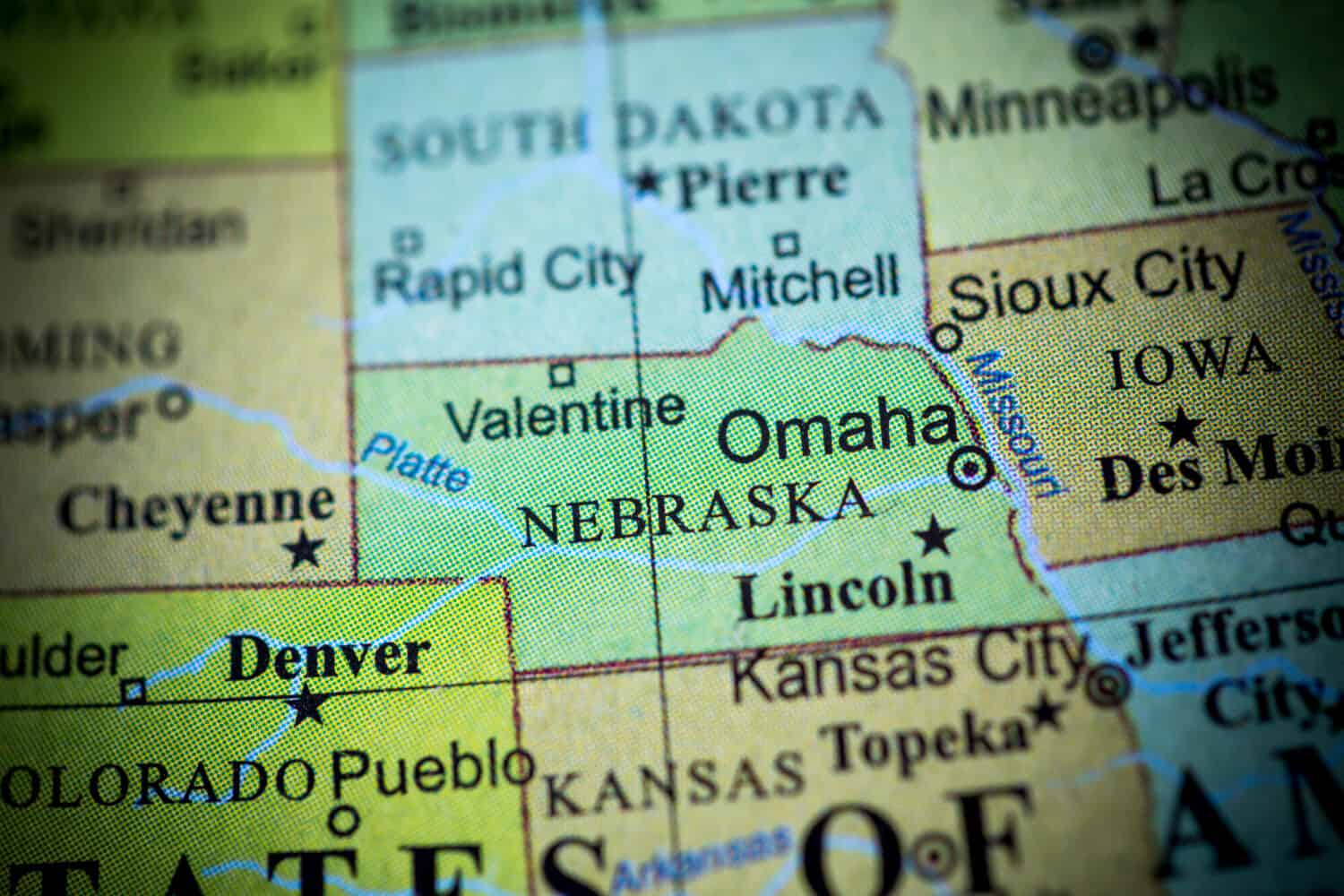
Nebraska shares borders with six states.
©Victor Maschek/Shutterstock.com
The Triple Landlocked State
With its central location in the United States, Nebraska is certainly landlocked. However, it actually holds an interesting distinction in that category.
There are ten U.S. states that are double landlocked, meaning that if you were traveling from one of those states, you must pass through three other states (or a combination of three states and Canadian provinces) to reach an ocean, gulf, or bay. However, there is only one state that is triple landlocked: Nebraska. You must travel through at least three states or provinces to reach an ocean, gulf, or bay.
For instance, to reach the Gulf of Mexico from Nebraska requires traveling through Kansas, Oklahoma, and Texas.
Reaching Hudson Bay from the Cornhusker State means traveling through South Dakota, North Dakota, and Manitoba.
If Nebraskans want to visit the Pacific Ocean, they must travel through Wyoming, Idaho, and either Oregon, Washington, or British Columbia.
A trip to the Atlantic Ocean means trekking through four states: Missouri, Tennessee, and then either North Carolina, Virginia, or Georgia.
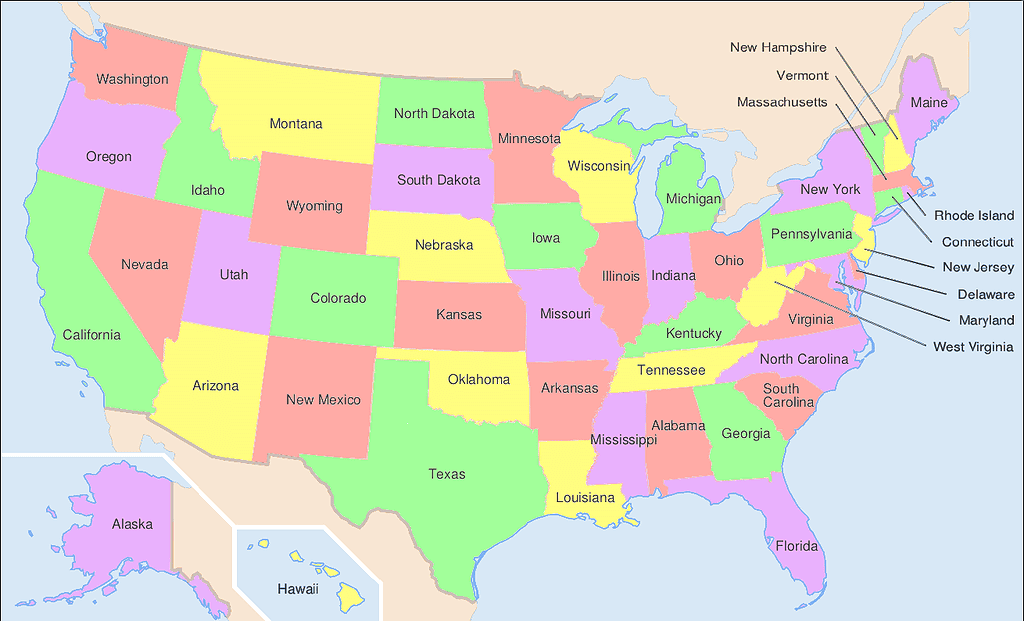
Nebraska is the only triple landlocked state, making it the “heartiest” of the heartland states.
©User:Wapcaplet in Inkscape / CC BY-SA 3.0 – License
Population
Nebraska is the 16th largest state in terms of area, but it ranks far lower in terms of population. With 1,967,923 residents (U.S. Census Bureau 2022 estimate), Nebraska is the 14th least populous state in the U.S.
The states with lower populations than Nebraska are:
- Idaho
- West Virginia
- Hawaii
- New Hampshire
- Maine
- Montana
- Rhode Island
- Delaware
- South Dakota
- North Dakota
- Alaska
- Vermont
- Wyoming
Idaho is the state with the most similar population numbers to Nebraska. The Gem State has just 28,890 fewer residents than Nebraska.
California has the highest population in the U.S., with 39,029,342 residents. The Golden State has a population almost 20 times the size of Nebraska’s. There are five counties in California with more residents than the entire state of Nebraska. In fact, the population of Los Angeles County alone is nearly five times that of Nebraska.
With 581,381 residents, Wyoming is the least populous state in the nation. Nebraska’s population is nearly 3.4 times that of Wyoming.
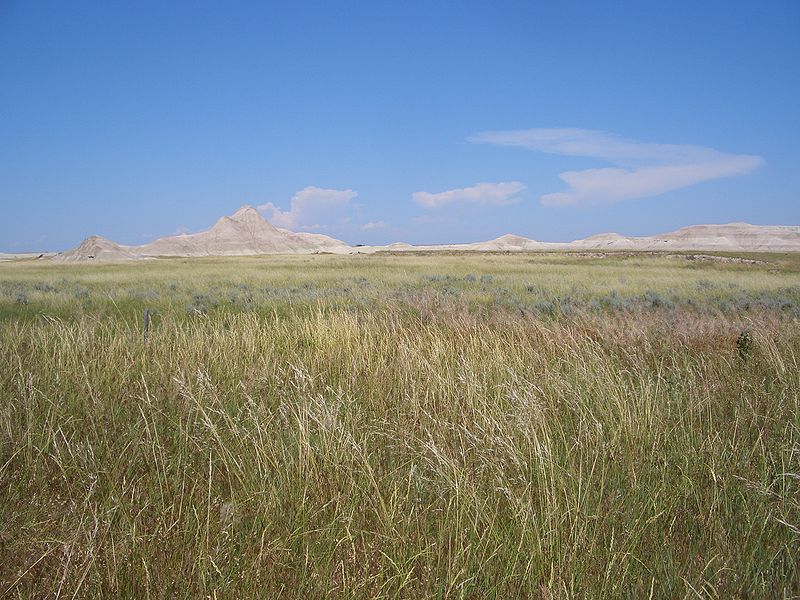
Nebraska is a large but sparsely populated state, as seen here in the Oglala National Grassland.
©Brian Kell (Bkell) / public domain – License
Population Density
While Nebraska is the 14th least populous state, it ranks even lower in terms of population density. Population density is the calculation of the number of people per square mile of land area. With 25.5 people per square mile, Nebraska is the eighth least densely populated state in the U.S. The only states with lower population densities include:
- Idaho
- New Mexico
- South Dakota
- North Dakota
- Montana
- Wyoming
- Alaska
It comes as no surprise that Alaska is the least densely populated state. Its small population combined with its enormous area gives it a population density of only 1.3 people per square mile.
New Jersey is the most densely populated state in the U.S., with 1,263 people per square mile.
Farmland
Nebraska’s low population density is mainly due to the vast expanse of farmland in the state. Farms and ranches account for approximately 92% of the state’s total land area. It’s not known as the Cornhusker State for nothing!
Nearly 25% of jobs in Nebraska are related to agriculture. The state is a national leader in numerous agricultural categories. It is the top state in popcorn and great northern bean production. It ranks second in ethanol production, third in corn exports, fourth in the total number of beef cattle, fifth in sunflower production and soybean exports, and sixth in the number of hogs.
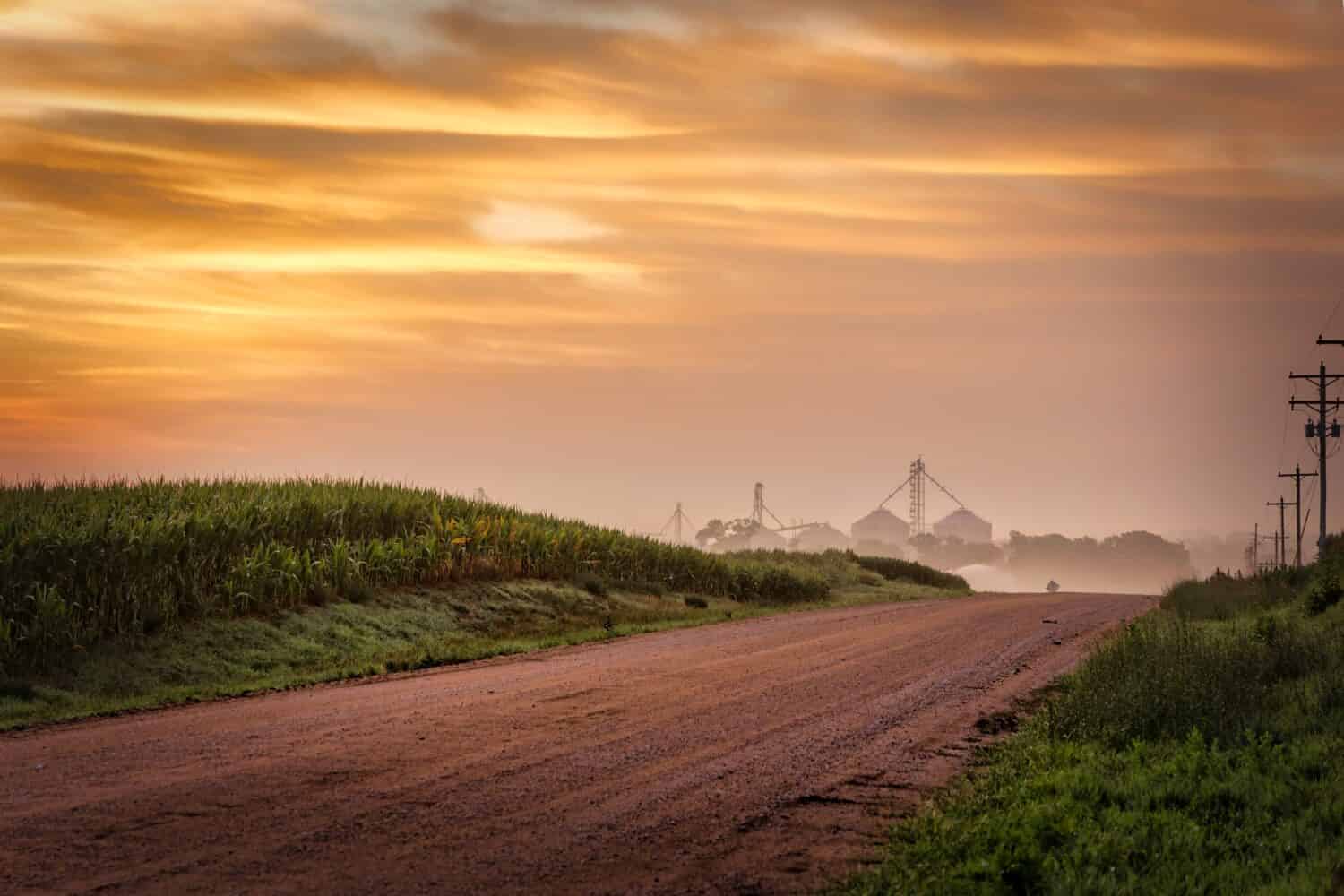
Farms, such as this one near Seward, dominate Nebraska’s landscape.
©Bill Chizek/Shutterstock.com
Aquifers
The state’s rich soil is due in large part to the aquifers that exist below the surface. Nebraska has more underground water reserves than any other state in the contiguous U.S. That’s a bit ironic since the state was once part of what was commonly called “The Great American Desert.”
The Ogallala aquifer is the largest in the United States. It extends through much of Nebraska, as well as portions of seven other states (South Dakota, Wyoming, Colorado, Kansas, New Mexico, Oklahoma, and Texas).
If all of the water in Nebraska’s aquifers came to the surface, the entire state would be covered by nearly 38 feet of water!
Largest Cities
Nebraska has two major cities (populations over 100,000). Omaha is the state’s largest city, with an estimated population of 485,153. The greater Omaha metro is home to over 967,000 residents and is expected to rise to over one million people in 2024.
Lincoln is the state capital and its second largest city, with 292,627 residents. The Lincoln metro area is home to over 340,000 residents.

Omaha is Nebraska’s largest city.
©DomVisuals/Shutterstock.com
Counties
There are 93 counties in Nebraska, which is far higher than the number of counties in an average U.S. state (62).
Cherry County in northern Nebraska is easily the largest county in terms of area. The county spans 5,961 square miles (15,439 square kilometers). Cherry County is bigger than three U.S. states: Connecticut, Delaware, and Rhode Island. It is also more than twice the size of the next largest Nebraska county (Custer County).
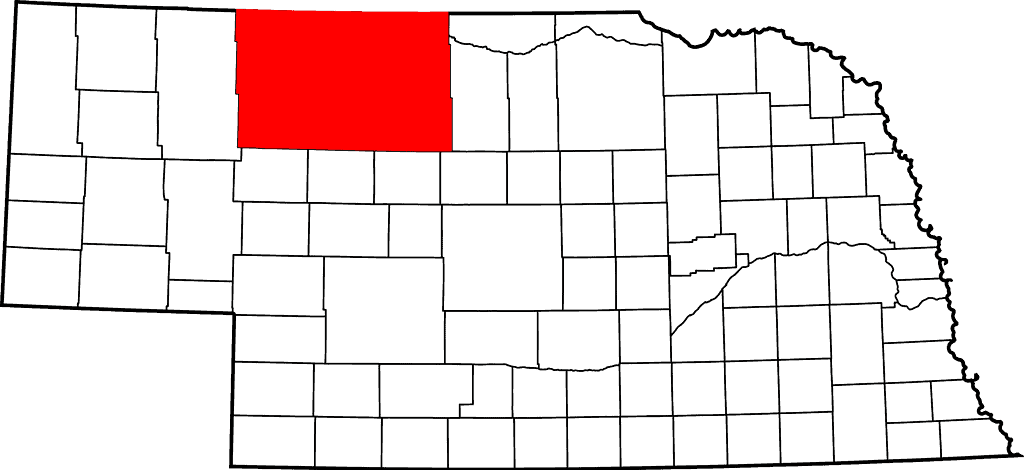
Cherry County is bigger than three states!
©David Benbennick / Public domain – License
Nebraska’s smallest county by area is Adams County in the south-central part of the state. The county spans 563 square miles (1,458 square kilometers).
Douglas County is the state’s most populous county, with 586,327 residents. Not surprisingly, the city of Omaha is in Douglas County. Two other counties have populations over 100,000: Lancaster and Sarpy counties. The three counties of Douglas, Lancaster, and Sarpy account for 56% of the state’s total population.

Douglas County has the highest population among Nebraska’s 93 counties.
©David Benbennick / Public domain – License
McPherson County in west-central Nebraska is the least populous county, with only 372 residents.
Federal Lands
Just over one percent of Nebraska’s total area is managed by federal agencies such as the Bureau of Land Management, Fish and Wildlife Service, the National Park Service (NPS), and the Forest Service. Only New York, Rhode Island, Kansas, Connecticut, and Iowa have smaller percentages of their total areas managed by these agencies.
There are no national parks in Nebraska, but NPS does manage other sites in the state, such as:
- Agate Fossil Beds National Monument
- Homestead National Historical Park
- Missouri National Recreational River
- Niobrara National Scenic River
- Scotts Bluff National Monument
There are also two national forests and two national grasslands managed by the Forest Service. The Bessey Recreation Complex and Campground houses the largest hand-planted forest in the world. It is found in the Sandhills of central Nebraska.
Along with these federally managed lands, there are numerous state parks and recreation areas in Nebraska.
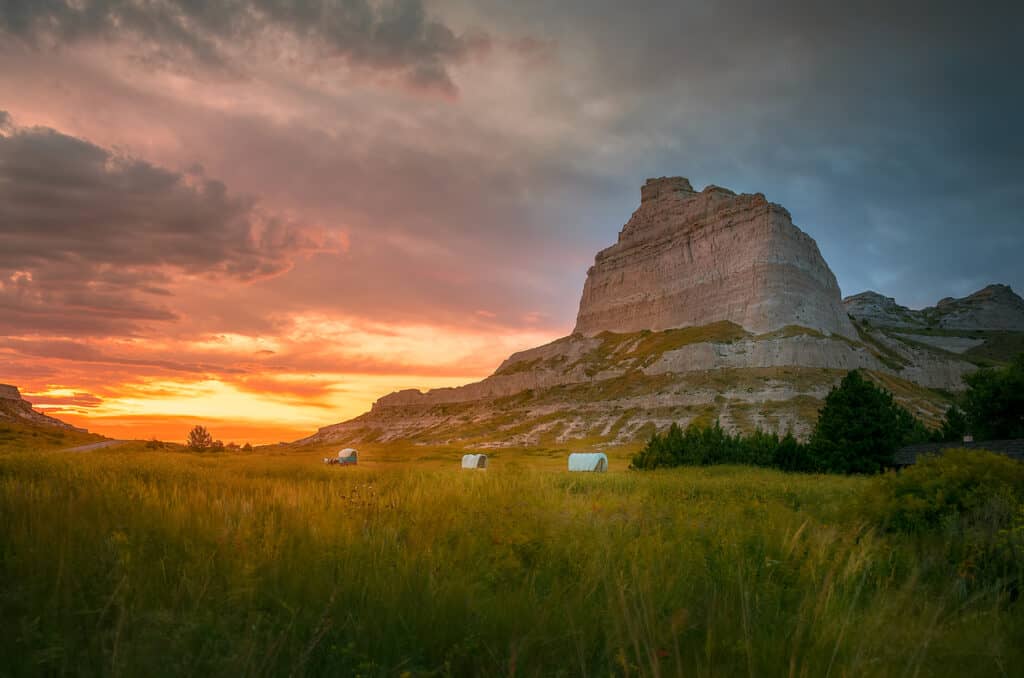
Scotts Bluff National Monument is an icon of the Nebraska landscape and was a key landmark on historic trails such as the Oregon Trail, California Trail and Pony Express Trail.
©iStock.com/LIKE HE
State Animals
The white-tailed deer is the state mammal of Nebraska. An estimated 300,000 of these deer roam Nebraska’s expansive landscape.
Along with the white-tailed deer, Nebraska legislators have chosen six other animals that represent their state. These state animals include the:
- western meadowlark (state bird)
- sandhill crane (state migratory bird)
- ornate box turtle (state reptile)
- channel catfish (state fish)
- honeybee (state insect)
- Columbia mammoth (state fossil)

The white-tailed deer was chosen as Nebraska’s state mammal in 1981.
©Tom Reichner/Shutterstock.com
The photo featured at the top of this post is © SANtosito / CC BY-SA 4.0 – License / Original
Thank you for reading! Have some feedback for us? Contact the AZ Animals editorial team.






